Il Museo, in collaborazione con l’Associazione Italiana “Geologia e Turismo”, ha organizzato il 26 e 27 maggio 2006 il Convegno Nazionale Annuale di Geologia e Turismo. La giornata del 26 maggio è stata dedicata a comunicazioni da parte di quanti operano nell’ambito del geoturismo e ha fornito anche l’occasione per lo svolgimento dell’Assembla Annuale dei […]
La mostra, che è stata ospitata e tenuta a battesimo lo scorso anno dal Museo, prosegue il suo viaggio in Italia e dal 13 luglio al 31 ottobre 2007 sarà ospitata dalla città di Agordo. L’inaugurazione della mostra si terrà venerdì 13 luglio presso la sala congressi “Don Ferdinando Tamis” alle 10,30. È stato pubblicato […]
In occasione del G&T DAY 2008, sabato 31 maggio il Museo, in collaborazione con il Parco Paleontologico di Cene, organizza una giornata alla scoperta delle ricchezze paleontologiche del territorio bergamasco. Vengono proposte una visita guidata alla sala del Museo “Bergamo… 220 milioni di anni fa” ed una escursione allo scavo paleontologico allestito presso il Parco. […]
Cervo fossile e dintorni Giovedì 12 gennaio 2006 è stata inaugurata una serie di conferenze su temi legati alla recente scoperta del cervo fossile venuto alla luce a Sovere. Il prossimo incontro sarà giovedì 8 Giugno alle 18,30. Il Dott. Aldo Avogadri terrà la conferenza “Il progetto territoriale P.L.I.S. Alto Sebino” dedicata al Parco Locale […]
Anche il Museo aderisce alla Festa Nazionale dei Nonni per celebrare l’importanza del ruolo svolto dai nonni all’interno delle famiglie e della società. Per l’occasione nelle sale del Museo viene proposta una divertente caccia al tesoro rivolta sia ai nonni sia ai nipoti. Vi aspettiamo domenica 2 Ottobre, dalle 9,30 alle 12,30 per partecipare alla […]
Nel 2003 il Museo ha festeggiato il trentennale della scoperta del suo reperto fossile più noto, il rettile volante Eudimorphodon ranzii, uno dei più antichi rettili volanti fossili mai ritrovati, recuperato dal personale del Museo nel 1973 durante una campagna di ricerca presso il sito paleontologico di Cene, in Val Seriana. La storia di questo […]
Anche nel 2005, da lunedì 14 a domenica 20 marzo, si è svolto l’annuale appuntamento con la manifestazione “Settimana della Cultura Scientifica e Tecnologica”, arrivata ormai alla quindicesima edizione e promossa dal Ministero dell’Istruzione, dell’Università e della Ricerca (MIUR). Per l’occasione sono state organizzate in tutta Italia una serie di iniziative proposte da scuole, associazioni, […]
Anche quest’anno presso la Nuova Fiera di Bergamo, dall’11 al 15 Maggio si è svolta la manifestazione “Lilliput – il villaggio creativo”, interamente dedicata ai più piccoli. Un’iniziativa all’insegna del divertimento con giochi, laboratori e spettacoli. Per l’occasione il Museo ha presentato alle insegnanti una vetrina delle proposte didattiche rivolte ai bambini delle scuole elementari […]
Museivacanze è un particolare campo ricreativo estivo che coinvolge le istituzioni museali di Bergamo e permette ai bambini delle scuole elementari della città e della provincia di trascorrere tre settimane tra laboratori didattici, giochi ed escursioni all’aria aperta. Con un approccio ludico-formativo, ogni settimana 60 bambini affrontano un tema diverso accompagnati dagli operatori didattici dei […]
VACANZE IN MUSEO … NATURALMENTEDicembre 2008 – Gennaio 2009 In occasione delle festività natalizie 2008-2009 il Museo e il C.R.E.A. di Bergamo (Centro Regionale Educazione Ambientale), in collaborazione con l’Associazione Didattica Naturalistica (A.D.N.), organizzano una serie di attività di laboratorio per i più giovani volte ad approfondire alcune tematiche ambientali. Il territorio bergamasco offre diversi […]


